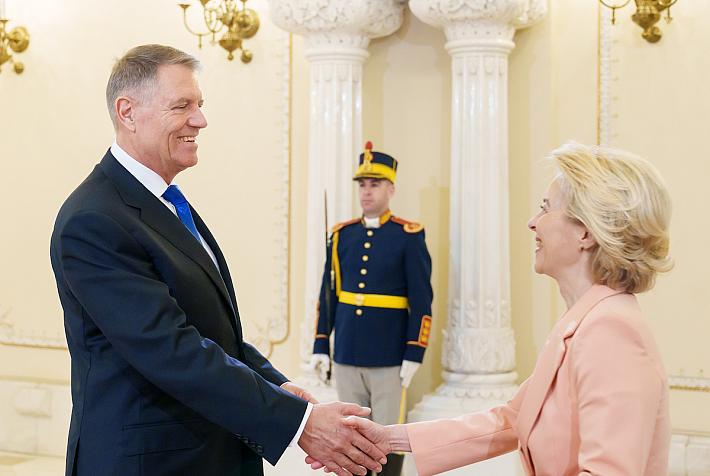Remote work in Romania: Ten things we've learned in four years

Corina Chirileasa, the Managing Partner and co-founder of Romania Insider, shares the media company’s experience with working remotely in Romania for the last four years.
With the coronavirus pandemic, along came several business and society changes whose effects will be interesting to see in the coming weeks and months. One of them is the change from office work to home-based, or remote work, which most companies in Romania have had to implement in recent days.
For our media company based in Romania, things haven’t changed much as we’ve been working mostly remotely for the last four years. As several members of our team moved from Bucharest and started to work from home in different parts of Romania and abroad, our main office was until recently home to only two colleagues (who now also started to work from home for the duration of the special measures - you can read more about Coronavirus in Romania here). We are now nine people working remotely on a daily basis.
During these years, we’ve learned and adapted and developed our own ways of working remotely as smoothly and as efficiently as possible. We have a virtual office that includes a virtual newsroom for our journalists and a virtual meeting space for our sales, marketing, and events team.
These are our takeaways and learnings so far:
1. Team cohesion before starting to work remotely.
For us, this was very important. Our team had been formed and people knew each other well enough from offline situations, which made the transition a lot smoother. We were in a way much like a family, trusted each other and knew our pluses and minuses, so we could integrate all this into the new remote work solutions. When integrating new colleagues whom we did not know well from face to face situations, integration took a bit longer, and in some cases, it did not work at all.
2. Online tools.
After some time, we found a structure that now includes what I think are the right tools for our work. We use Slack for day to day communication, we have dedicated channels, as well as interact with each other via Slack. It was a huge improvement from emails and/or using other channels like Skype, Whatsapp, Facebook Messenger or text messages. In fact, we decided to only use Slack for work topics and established which are the emergency channels outside working hours. It’s important to define and communicate working hours for different departments and for everyone to announce their change in the schedule when it happens (if you have a flexible schedule like us in the sales & marketing department). We’ve also learned that sometimes feedback won’t come as fast as we expect it on Slack, as everyone has a different rhythm of checking messages there (not the same as being in the same office and asking the colleague for a quick piece of info), so we (try to) plan for it.
We use Zoom for online meetings, including for our 15-minute daily morning call. It is free for several people and for up to 40 minutes sessions. In the beginning, we only used a tool that offered audio and only when we switched to video as well, as we realized that we had missed seeing each other. Even if we don’t do a lot of small talk during our meetings, sometimes we do and it’s a nice way of still keeping the personal feeling. Plus, you can always tell when a colleague has an issue on a certain day (is very tired or demotivated, or on the contrary, has lots of energy and manages to brighten everyone up) and you can react accordingly - sometimes just by offering to help them with something on that day, push a deadline or offer some time off is possible.
We use a CRM tool (Pipedrive) for sales, and this is tied automatically to Slack, every time we open a new sales deal, or a sale is won, this is automatically posted in Slack and we can react accordingly to it: give advice if needed, offer background info if we have, or discuss the client’s needs directly in Slack. It helps to move it through the post-sale flow - contracting, invoicing, trafficking, etc.
Devices. We use most of our tech tools both on our laptops and on our phones. Sometimes, we answer work chat messages even if we’re outside our normal working place.
3. Trust & control
Our remote work experiment only worked because we trusted each other and each of us lived up to that trust. An indicator for me of being present for work is the status on Slack (being active or not), prior communication about the day’s schedule (meetings if any, bigger chunks of time dedicated to working outside Slack) - which we communicate in our daily meeting. This is an unwritten rule and everyone in our team knows to communicate when they’re not around Slack to pick up messages.
In general, we judge our results and don’t time track (unless we want to do that for our own efficiency. I, for example, track my time rather rigorously, so I know what I dedicate my time to, and make changes when it’s not according to the ratio in my strategy. I use Toggle for time tracking, it’s for free. It did not gain a lot of traction with other colleagues).
4. Fixed and ad-hoc online team meetings
We have several fixed meetings during the week for different topics, and we try to keep those short and sweet and always follow an agenda. We have brief calls at the beginning of the day (separate for editorial and sales & marketing teams), 10 to 15 minutes, to talk about what's in plan for that day. Sometimes we have ad-hoc meetings if needed and we try to keep a balance so as not to have too many online meetings on one day. My colleagues in Bucharest also have face to face meetings, and I do too when I travel to Bucharest for a couple of days once every other month or so. But in general, online meetings are part of our modus operandi.
5. Meetings outside the team. When it comes to meeting clients & partners, we use a combination of online & face to face meetings, depending on the topic, on urgency and our internal planning, as well as the other person’s preference. Much to my surprise, I found that many people are open to online meetings knowing I have moved from Bucharest and work remotely. With Romania being a relationship-based society, face to face meetings are however still important when establishing new connections. This applies to business connections, partnerships, and new hires.
6. Managing time & space limits. With tools that help us be connected all the time and from different devices, and with flexible home office patterns, there are high chances that boundaries between work life and personal life overlap even more than in an office scenario, and often these boundaries disappear. I believe this is one of the biggest caveats of working from home and remotely, especially when the company gives its staff the flexibility to choose work hours - so the whole responsibility of both working on the agreed parameters and not overdoing it belongs to the employee. I too had to re-think my personal schedule several times, and how much of work do I allow into my personal time. It often leads to stress - on an individual level but also for a team: everyone’s work patterns differ and sometimes change from day to day, which might cause frustration to other members of the team who need feedback, for example. What we do in general, to try to minimize these, is have a rather fixed schedule for the editorial team to ensure a steady delivery of content, and have a fixed yet flexible at times schedule for the sales & marketing team. We switch off Slack notifications at night and early morning and during weekends and really try not to bother each other during our off times or personal time unless big emergencies.
Space limits is a concept I did not even think of when starting to work from home, until my home office ended up in my bedroom for a number of weeks. Since then, I dedicated a room of the house to our home office and we try to stick to working there most of the time. It also provides a nice background for video calls (something very important too). A dedicated space makes it easier to separate from the rest of the household activities (and often helps keep kids out of video business meetings...)
7. Face to face team meetings. Ever since I moved out of Bucharest, I get to see the people on our team rather rarely in person. I try to fly every two months to Bucharest and so does my business partner from Berlin, and then we can meet some of our team members who are in the city. This is another caveat of working remotely - thankfully we have had enough time to know each other well before going so remote, so we still live off that somehow. But we do have at least once a year team meeting - usually in late November as a pre-Christmas dinner, and since recently, we also try to meet for a weekend during summer for a team retreat.
8. Written communication pitfalls. Most of our day to day communication is written. For me, this is perfect, I love written communication, but I also recognize it has downsides: the lack of emotional context of a person, of visual and hearing cues that give you hints about what the other person might mean, feel, want, well beyond the words. Very often, having a brief call with a colleague helps more in complex or sensitive situations. For what I perceive as lack of time, I don’t do it as often as I should. Yet sometimes, there are several topics that would require a meeting of more people in the team, and it is hard to find a common time to meet for all of them, so we take the written approach and we keep everyone in the loop this way.
9. Feedback within the team. This is again sometimes very important which sometimes happens the right way, other times, not. Most often, we give each other feedback to a certain topic but fail to give general feedback over the quality of our work, our achievements for a longer period. When focused on results and efficiency, we tend to skip praising what people do well, even between colleagues, not just from managers. This is something we’re still working on. We try to have regular development calls and give each other complete feedback.
10. Mood and background feelings. The mood changes during the day for all of us, and not being in the same place makes it harder to recognize how the others are feeling when you open a new topic or you ask them for something. Not knowing how the other person is feeling at a certain time makes the communication harder. In an office setting, you can see how the other person is from the moment they walk into the office. Often, you can be part of improving their day. This is a lot harder remotely. To improve our mood and wellbeing, we have been using an app called Headspace, mainly for meditation (these days it has several free guided meditations in there).
We learn and adapt quite often, even these days we discover new tools and ways of working better together. I would be happy to hear from you - how you adapted to remote work, what solutions did your company find for different things, and what problems have you faced - drop me a line at corina@romania-insider.com.
(photo: © Simona Pilolla | Dreamstime.com)















